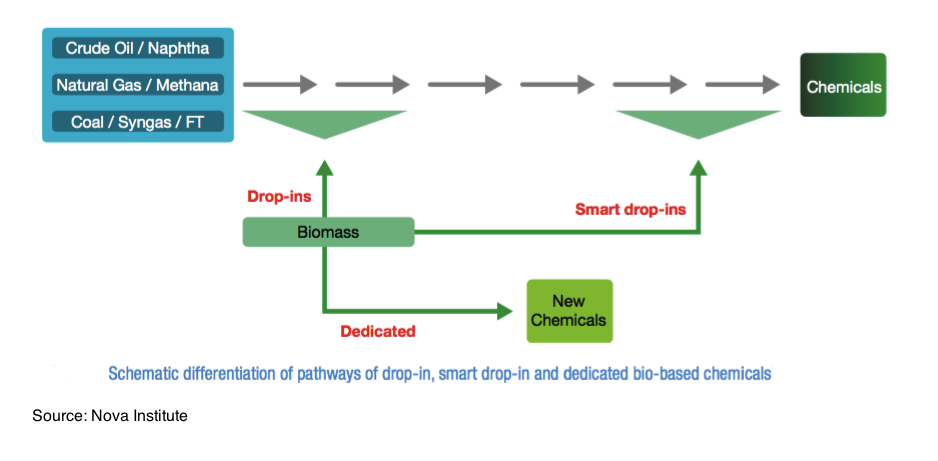The Plastics Industry Association last year released a report on bioplastics trying to define what is the product about. In a survey PLASTICS conducted, the report noted that of 1,000 U.S. consumers in January 2018, 31% were still not familiar at all with bioplastics—defined as a type of plastic made from biobased materials like sugar cane or cornstarch, or are capable of biodegrading. At the other end of the spectrum, 32 percent were “familiar” or “somewhat familiar” with bioplastics. The confusion among consumers may not be just with bioplastics, but with a wide range of products that fall under the “green” umbrella.
PLASTICS uses the technical definition of bioplastic – a plastic that is biobased, biodegradable, or both biobased and biodegradable – in determining membership in its Bioplastics Division.
BI·O·PLAS·TIC
/,bīō ˈplastik/ noun plural noun: bioplastics
1. a type of plastic partially or fully biobased and/or biodegradable
– a biobased bioplastic has some or all of its content produced from a renewable plant (or sometimes animal) source.
– biodegradable plastics are those that completely degrade into carbon dioxide (CO2), methane (CH4), water (H20), and biomass through biological action in a defined environment and in a defined timescale.
i. Examples of types of biodegradability include compostable, anaerobically digestible, and marine and soil biodegradable.
The Plastic Industry Association’s Bioplastics Division was established in 2007 and today has 22 members around world. Members include leading developers and manufacturers of bioplastics as well as members who represent leading sources for bioplastics, as well as brands that utilize the material in products and packaging. The Bioplastics Division wants to educate colleagues in the plastics sector as well as brands, consumers and policymakers about bioplastics and articulate the different bioplastics options available today and in the future.
Meanwhile, Nova Institute also tried to further categorize last year the differences in bioplastics based on their monomers. In last year’s Biopolymer report, Nova Institute for the first time assigned all bio-based polymers to three groups as defined in the paper “Bio-based drop-in, smart drop-in and dedicated chemicals”
These are:
1) Bio-based drop-in chemicals are bio-based versions of existing petrochemicals which have established markets. They are chemically identical to existing fossil-based chemicals. Bio-based polymers in this group: PE/PP, PET, EPDM and PUR.
2) Smart drop-in chemicals are a special sub-group of drop-in chemicals. They are also chemically identical to existing chemicals based on fossil hydrocarbons, but their bio-based pathways provide advantages compared to the conventional pathways. We consider drop-in chemicals to be ‘smart drop-ins’ if at least two of the following criteria apply:
- The Biomass Utilization Efficiency from feedstock to product is significantly higher compared to other drop-ins.
- Their production requires significantly less energy compared to other production alternatives.
- Time-to-product is shorter due to shorter and less complex production pathways compared to the fossil-based counterpart or other drop-ins.
- Less toxic or harsh chemicals are used or occur as by-products during their production process compared to the fossil-based counterpart or other drop-ins.Bio-based polymers in this group: Epoxies, PBAT, PBS(X) and PTT.
3) Dedicated bio-based chemicals are chemicals which are produced via a dedicated pathway and do not have an identical fossil-based counterpart. As such, they can be used to produce products that cannot be obtained through traditional chemical reactions and products that may offer unique and superior properties that are unattainable with fossil-based alternatives. Bio-based polymers (platforms) in this group: APCs, CA, PHAs, Starch Blends / Starch based plastics, PAs, PEF and PLAs.
By the way, I will also post a recently released update on the Nova Institute’s Biopolymers Report.
Finally, here are some interesting videos from various sources that could help (maybe) some of the confusion concerning defining bioplastics.




